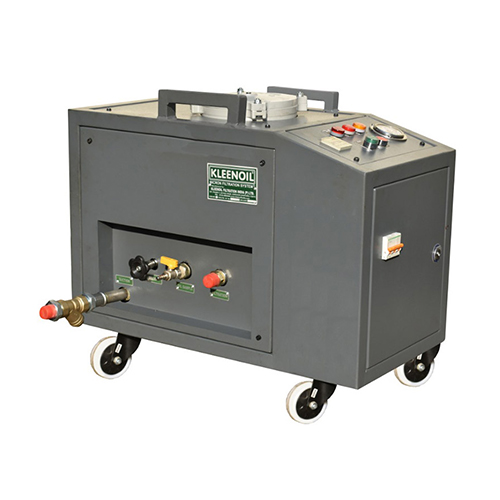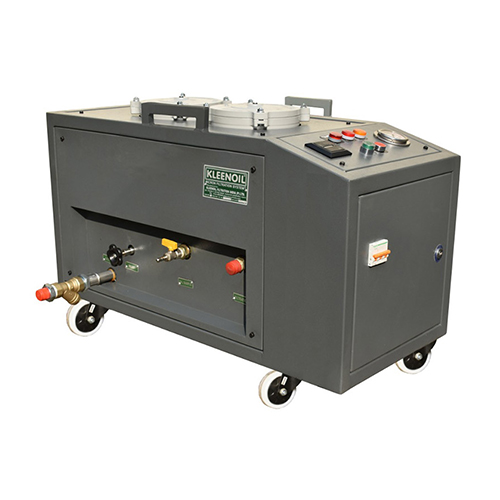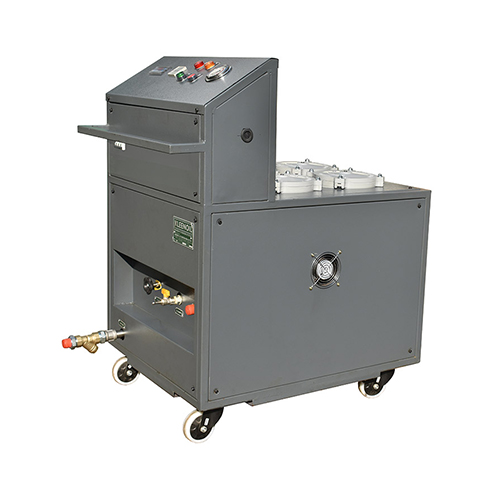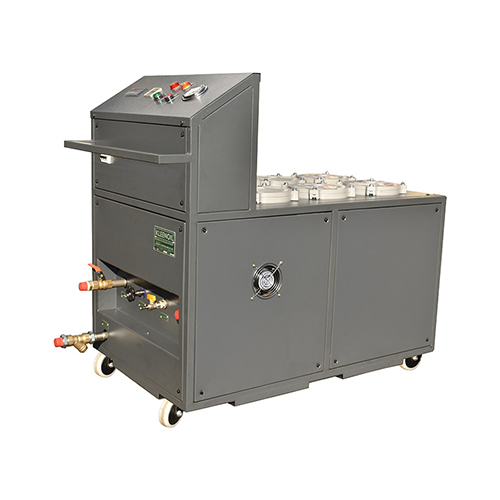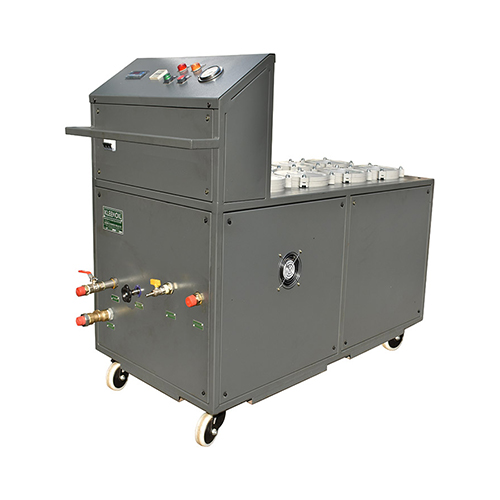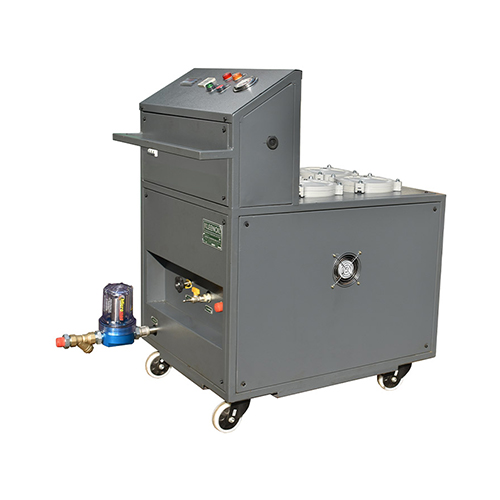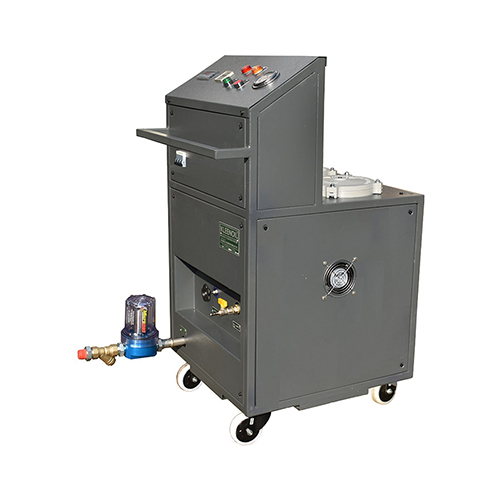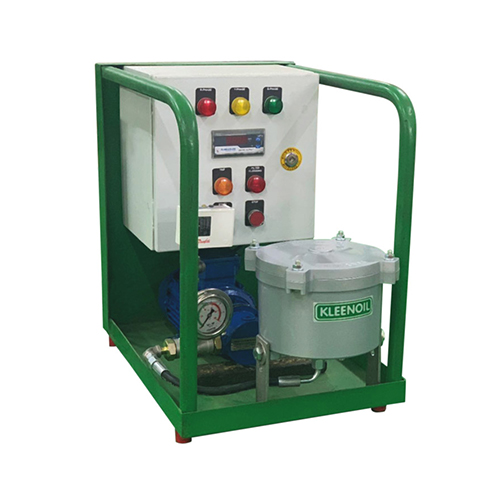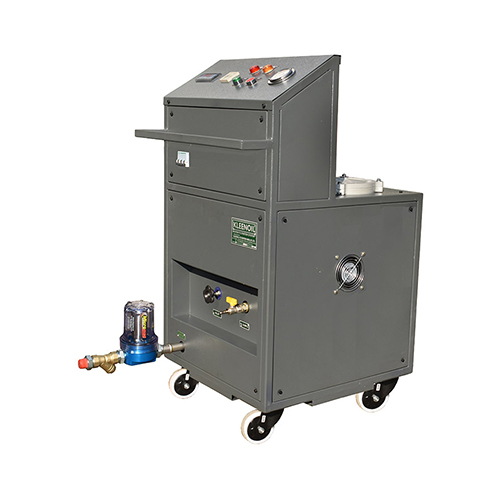
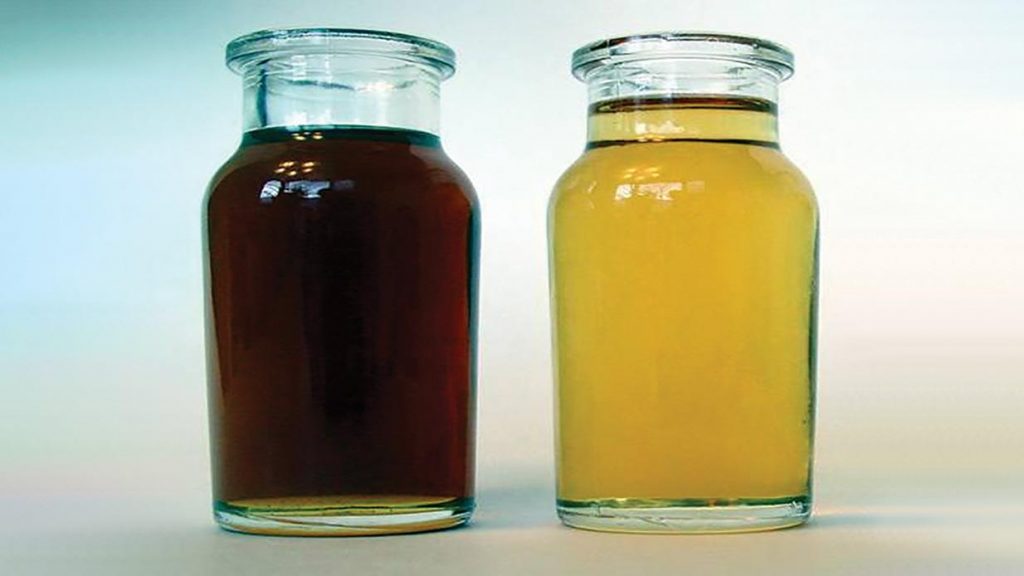
Hydraulic Oil Filtration
Hydraulic Oil is the energy transfer medium in all hydraulic systems. However, the job of hydraulic fluid goes beyond simple transmission of power. Although transmitting hydraulic energy is the core purpose of hydraulic fluid, it is useful in four secondary functions – heat transfer, Contamination removal, Sealing and lubrication.
Hydraulic machines produce a lot of excess heat in normal operation often caused by inefficiencies of the components themselves like pumps and motors. Without a way to carry heat away from these components they could easily overheat with resulting damage of seals and internal components, especially as a result of low local viscosity. As oil returns to the reservoir it often passes through a cooler to help maintain optimal temperature range before it is pumped back out to the system. Conversely, hydraulic fluid can carry heat into a system during cold starts when needed.
Machines using Hydraulic Oil
- Injection Molding Machines
- Die Casting Machines
- Blow Molding Machines
- Power Press
- Excavators
- Dumpers
- Crane
- Hydraulic Power Packs
- Other Hydraulic Systems
Turbine Oil Filtration
Turbine oil formulations are relatively simple, they are a mixture of the following ingredients: Base oil, Corrosion inhibitors, Oxidation inhibitors, Defoamants and Demulsifiers. The Base oil is usually 97 percent or more of the turbine oil formula.
Contamination in Turbine Oil
Moisture, Carbon Particles, Dirt.
Problem because of Contaminated Oil
Pump Damage, Seal Damage, Pressure Problem, Dirt & Carbon Problem In Oil, Moisture In Oil, Ferrous Particles.
Gear Oil Filtration
Gear oil is a lubricant made specifically for transmissions, transfer cases and differentials in automobiles, Trucks and other machinery. It is of a high viscosity and usually contains organosulfur compounds. Some modern automatic transaxles (integrated transmission and differential) do not use a heavy oil at all but lubricate with the lower viscosity hydraulic fluid which is available at pressure within the automatic transmission. Gear oils account for about 20% of the lubricant market.
Most lubricants for manual gear boxes and differentials contain extreme pressure (EP) additives and anti wear additives to cope with the sliding action of hypoid bevel gears. Typical additives include dithiocarbonate derivatives and sulfur-treated organic compounds (“sulfurized hydrocarbons”).
Contamination in Gear Oil
Moisture, Carbon Particles, Dirt.
Problem because of Contaminated Oil
Pump Damage, Seal Damage, Pressure Problem, Dirt & Carbon Problem In Oil, Moisture In Oil, Ferrous Particles.
Rust Preventive Oil Filtration
Rust preventive oils are popularly used as lubricants. They are used in bikes, gardening tools and factory machines to protect their parts from corrosion.
Rust preventive oils are applied to metals during a semi-finished or finished stage. They work by creating a protective coating around metal which prevents contact of the corrosive substance with the metal.
Rust preventives on mineral oil base are generally used for short-term inter-operational protection, coating components before wrapping or as a temporary protection of metal bar, rod or strip. Rust preventive oil suppliers suggest its use as flushing oil for internal protection of engines and machinery.
Contamination in Rust Preventive Oil Filtration Machine
Small Iron Particles
Problem because of Contaminated Oil
Rejection of parts.
Neat Cutting Oil Filtration
Neat cutting oils are fluids usually based on mineral oils and used for cutting without further dilution i.e. as supplied by the manufacturer. They are generally blends of mineral oils and other additives.
Neat oils can be used for applications from light machining to heavy-duty operations such as Gear hobbing, Broaching, Turning, Honing and Drilling.
Neat Cutting Oils are used in a variety of machining operations e.g. Grinding, Turning, Milling, Broaching, Drilling, Tapping, Gear cutting etc. Primarily to provide cooling and lubrication which lead to good tool life and appropriate surface finish of the components being machined.
Neat Cutting Oils as opposed to soluble or synthetic cutting fluids provide high levels of lubrication to help reduce frictional heat as the cutting tool penetrates the metal or rubs against the swarf. Neat oils also save energy by reducing cutting forces.
Contamination in Neat Cutting Oil
Small ferrous particles, Non- ferrous particles, Chips.
Problem because of Contaminated Oil
Rejection of parts, Decrease in tool life, Less production, Cleaning of tank (time consuming process).
Luboil Filtration
Luboil is used in heavy-duty trucks to ensure their sufficient lubrication and normal oil pressure in any demanding conditions. It is suitable for high-speed, heavy-load, heavy-duty and four-stroke direct injection diesel engines as well as diesel engines in different large transporting and engineering vehicles, large passenger vehicles, power generation equipment and mining equipment made at home or abroad.
Contamination in Luboil
Carbon Particles.
Problem because of Contaminated Oil
Engine seize, Low performance, Engine damages.
Water Glycol Filtration
Water Glycol fluids consist of a solution of water ethylene or diethylene glycol a high molecular weight polyglycol and an additive package. The water-to-glycol mixture typically contains 38 to 45 percent water. These fluids usually contain red or pink dye to aid in their identification.
With water in the fluids formulation, evaporation is ongoing and upper operating temperature limits must be considered. Checks must be made periodically of the water content. The fluids typical operating temperatures should be kept below 150°F.
Contamination in Water Glycol
Iron particles, Aluminum particles, Carbon particles, Dirt.
Problem because of Contaminated Oil
Pump Damage, Seal Damage, Pressure Problem, Dirt & Carbon Problem In Oil, Moisture In Oil, Ferrous Particles.
Diesel Fuel Filtration
Diesel fuel, also called diesel oil, combustible liquid used as fuel for diesel engines, ordinarily obtained from fractions of crude oil that are less volatile than the fractions used in gasoline. It’s useful because it’s so oily. If you soak parts in diesel and then just rinse them, the fuel leaves a little oil on everything and parts are overall easier to clean later and you don’t have to worry about any steel parts (most are aluminum) rusting.
Every day, cleaning engine parts – whether they are small parts like fittings and fasteners, bigger parts like connecting rods and pistons, or even cylinder heads and engine blocks – requires more and more attention to the three E’s: economics, efficiency and environmental awareness. But while shops may have the same goal – clean parts – the methods they can choose from may be very different.
What seems to be good enough isn’t anymore, and although there isn’t one system that will handle all your cleaning needs, the good news is that the systems available today can have a positive effect on shop efficiency, business economics and environmental impact.
The cost of equipment, chemicals, labor, maintenance, and disposal costs can be significant, but cleaning expenses are an important cost of doing business. Doing it wrong can require even more expense in labor or parts replacement.
Contamination in Oil Filtration Machine
- Moisture
- Carbon Particles
- Dirt
- Ferrous Particles
- Aluminum Particles
Problem because of Contaminated Oil
Pump Damage, Seal Damage, Pressure Problem, Dirt & Carbon Problem in Oil, Moisture in Oil, Ferrous Particles
